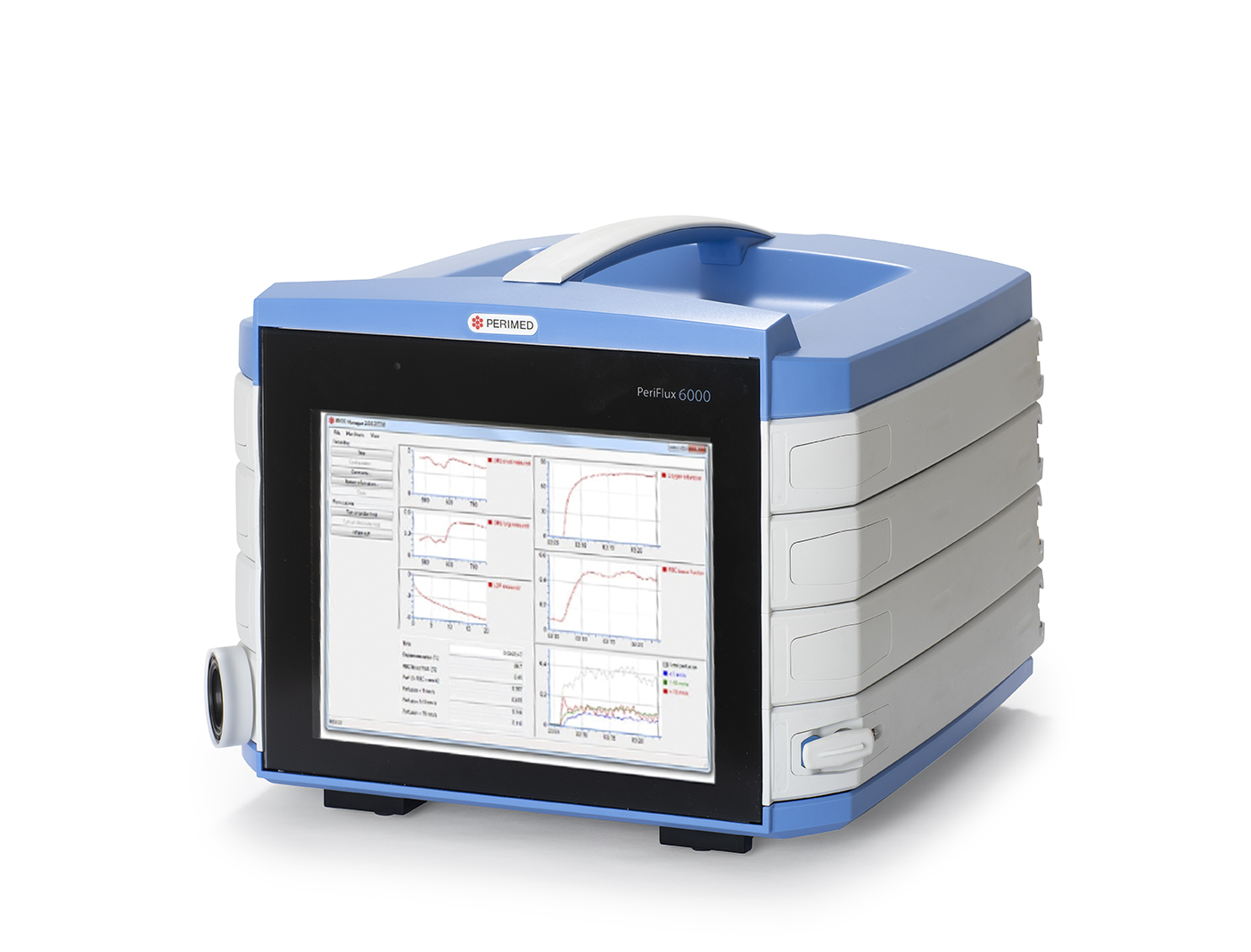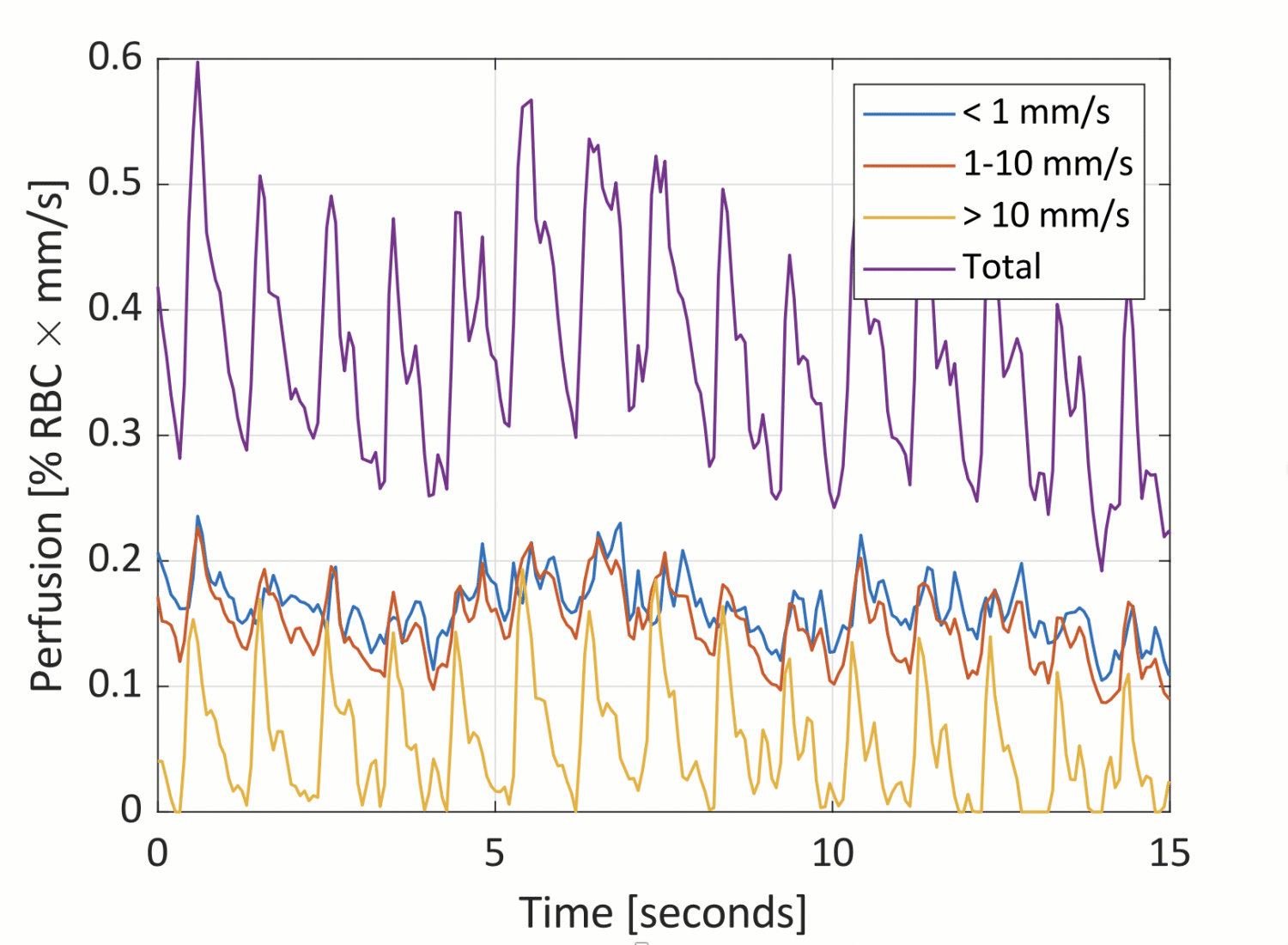Speed-Resolved Perfusion Measurement
![]()
With novel model-based analysis algorithms, it is now possible to measure the tissue blood perfusion in absolute units divided into different speeds, i.e. tissue fraction of red blood cells (RBC) multiplied with speed – % RBC × mm/s – divided in blood flowing with speed below 1 mm/s, 1-10 mm/s, and above 10 mm/s. Compared to conventional perfusion, measured in perfusion units PU, the speed resolved perfusion facilitates discrimination between different flow compartments, for example nutritive flow from shunt flow.
By combining measurements of tissue oxygen saturation and speed resolved perfusion, a comprehensive view of the microcirculation and the tissue metabolism can be achieved. We offer the PeriFlux 6000 EPOS instrument to measure these microvascular parameters in the same sampling volume using an integrated fiber-optic probe and advanced model-based signal analysis. The parameters from the EPOS are:
- RBC oxygen saturation (%)
- RBC tissue fraction: gram RBC / 100 gram tissue (%)
- Oxygenized and reduced hemoglobin tissue concentration (µM)
- Speed-resolved perfusion: gram RBC / 100 gram tissue × mm/seconds (% RBC × mm/second). Three different speed regions: < 1 mm/second, 1 to 10 mm/second, and > 10 mm/second
- Measurement depth (mm)
Various provocations protocols, such as local heating or brachial occlusion, are preferably used in combination with these microcircular measurements, in order to reveal more information about the microvascular function. There is built-in automatic support for those provocations in the EPOS instrument.
References:
- Inverse Monte Carlo in a multilayered tissue model: merging diffuse reflectance spectroscopy andlaser Doppler flowmetry. Fredriksson I, Burdakov O, Larsson M, Strömberg T. Journal ofBiomedical Optics. 18(12), 2013.
- Oxygen saturation, red blood cell tissue fraction and speed resolved perfusion – A new optical method for microcirculatoryassessment. Jonasson H, Fredriksson I, Pettersson A, Larsson M, Strömberg T. Microvascular Research. 102, 2015.
- Skin microvascular endothelial dysfunction is associated with type 2 diabetes independently ofmicroalbuminuria and arterial stiffness. Jonasson H, Bergstrand S, et al. Diabetes and VascularDisease Research. 14(4), 2017.
- The relationship between forearm skin speed-resolved perfusion and oxygen saturation, and finger arterial pulsationamplitudes, as indirect measures of endothelial function. Bergstrand S, Morales M-A, Coppini G, Larsson M, Strömberg T.Microcirculation. 25(2), 2018.
- Validation of speed-resolved laser Doppler perfusion in a multimodal optical system using a blood-flow phantom. JonassonH, Fredriksson I, Larsson M, Strömberg T, Journal of Biomedical Optics 24(9), 2019.
- Normative data and the influence of age and sex on microcirculatory function in a middle-aged cohort: results from theSCAPIS study. Jonasson H, Bergstrand S, et al. American Journal of Physiology-Heart and Circulatory Physiology 318(4),2020.
Please fill in the form to get more information
Disclaimer: It is possible that the products on the Perimed website may not be cleared for sale in all markets.



